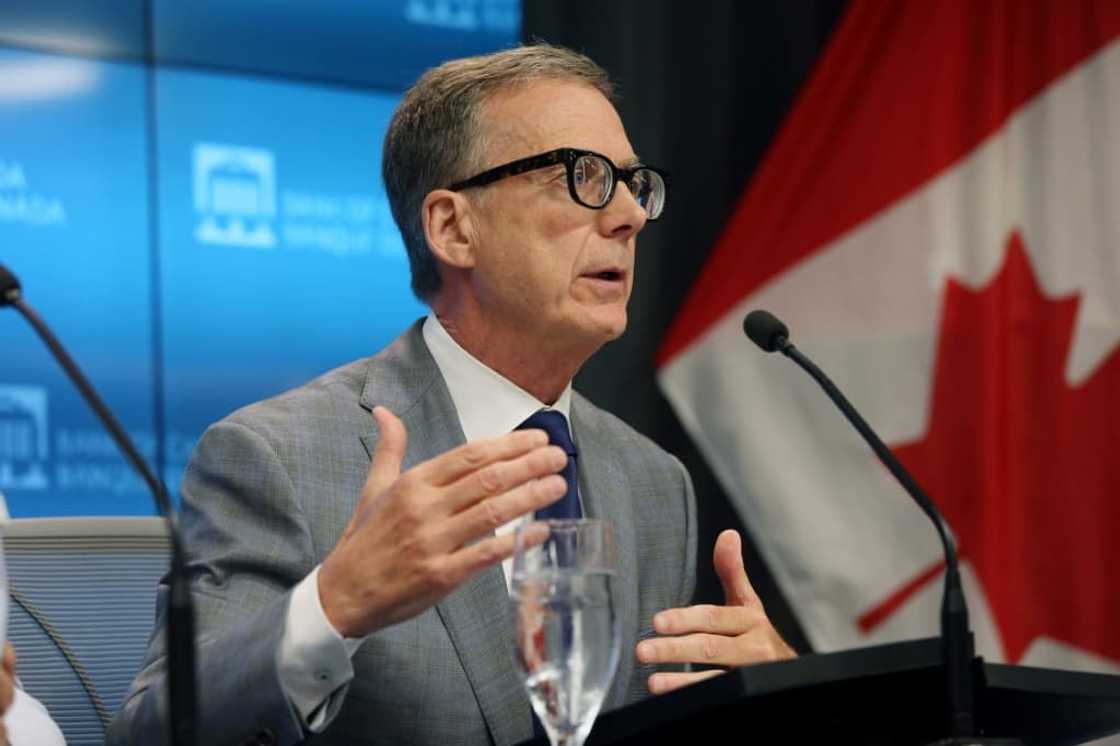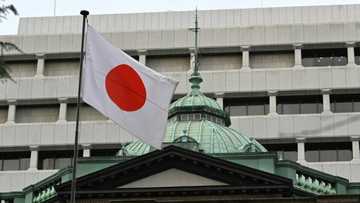Canada central bank holds key lending rate at 5%

Source: AFP
The Bank of Canada on Wednesday held its key lending rate at five percent for the fourth time in a row, saying it remains concerned about stubbornly high inflation.
Despite a slower economy, the bank said in a statement that its "governing council wants to see further and sustained easing in core inflation," dampening hopes of imminent rate cuts.
Many economists expected it would start cutting rates as early as April or June.
The central bank began hiking rates from a record low of 0.25 percent in March 2022 in a bid to tame soaring inflation.
Inflation had been steadily falling from a June 2022 peak of 8.2 percent -- a sign that higher borrowing costs were having the desired impact.
But a small uptick last month to 3.4 percent has arguably complicated the path to a 1-3 percent range desired by the bank.
Core inflation measures, which excludes volatile food and energy prices, meanwhile, "are not showing sustained declines," the bank said.
"The Bank of Canada isn't ready, willing or able to bring interest rate relief just yet, but dangled some hints that lower rates are on the way later this year," CIBC Economics analyst Avery Shenfeld said in a research note.
He and others noted that the bank has dropped language from earlier releases that left open the possibility of further rate hikes.
"Canadian central bankers appear to be waving the white flag on further rate hikes," said Desjardin analyst Royce Mendes.
Its course, Shenfeld added, "has shifted from a discussion of whether rates are high enough to one about how long they need to keep rates at 5 percent. That's a dovish tilt."
He added that cuts of at least 150 basis points this year will be needed eventually "to get the economy moving again after its current stall."
The central bank said global economic growth was slowing and inflation was easing across most economies.
"In Canada, the economy has stalled since the middle of 2023 and growth will likely remain close to zero through the first quarter of 2024," it estimated.
Consumer spending and business investment are down, and "supply has caught up with demand," leaving only modest excess supply in the economy.
Job vacancies also have returned to near pre-pandemic levels and new job creation has slowed despite rising wages.
The bank forecast that Canadian economic growth will "strengthen gradually" around the middle of 2024, followed by an uptick in household spending and exports that are likely to give a boost to business investment.
Overall, it said it expects Canada's economy to grow 0.8 percent in 2024 and 2.4 percent in 2025, roughly unchanged from its October projection.
Inflation, it added, would likely remain close to 3 percent over the coming year, before gradually easing in 2025.
PAY ATTENTION: Follow Briefly News on Twitter and never miss the hottest topics! Find us at @brieflyza!
Source: AFP



